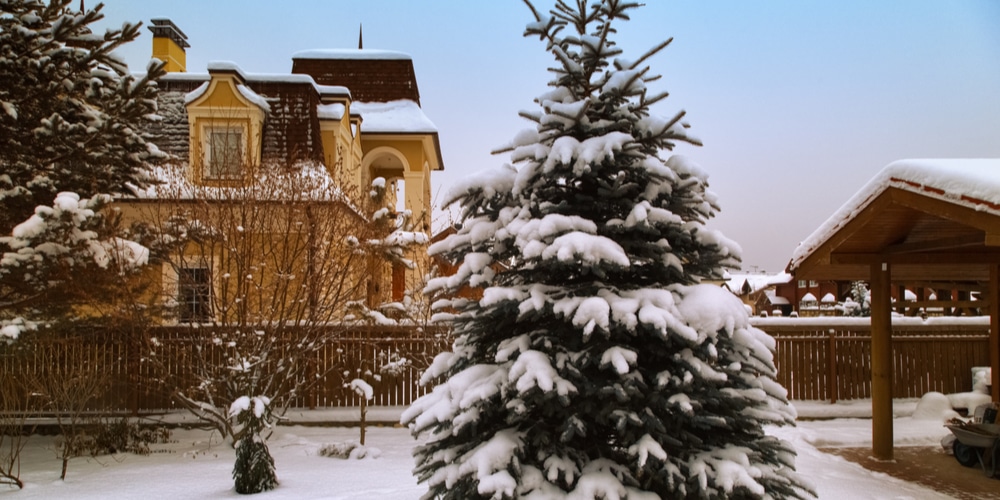A Christmas tree is a significant yet essential purchase during the holiday season. Homeowners with a yard or garden might be inclined to think, ‘can you replant a Christmas tree?’
Replanting a Christmas tree is certainly possible, but there must be two things to make it possible. One, the tree must have its root ball intact, and two, it must have not spent more than ten days indoors.
Can You Replant a Christmas Tree?
Replanting is actually an excellent idea for seasonal greenery such as a Christmas tree. You can reuse the tree and not have it end up in the landfill, and gain benefits such as shade, windbreak and as an interesting specimen in your landscape.
However, it’s important to note that not all Christmas trees can be replanted. Cut trees and those without roots are impossible to put back on the ground, as are trees that have spent more than 10 days inside your house.
The best chances of succeeding with a replanted Christmas tree is to buy a live plant, which is typically more expensive than its cut version.
One way to tell if you have a live specimen is to check and see if there’s a root ball (usually wrapped in burlap) at the bottom. Even with a live plant there’s still a chance that it won’t regrow or continue when you plant it outside.
If you intend to replant a Christmas tree then you shouldn’t have it spend more than 10 days inside your house. Also, you should make sure the root ball stays hydrated and moist throughout. You can wrap it in plastic, wet sphagnum moss or with ice cubes to keep it viable for replanting later on.
How to Replant a Christmas Tree
The first step to replanting a Christmas tree is to select a good spot in your yard or garden. It’s recommended that you dig a hole before the ground becomes frozen to get a higher chance of success.
Count the days when the tree will have to spend indoors- after 10 days replanting might not be viable anymore.
Remove any and all decorations before you put the tree outside to acclimate. It’s most likely that your Christmas tree is already dormant, so you’ll need to make it stay that way by emulating the environment.
Keep it stored in a cold, sheltered area such as your garage or a shed and away from drafts and heat-emitting appliances. Do this for around 1-2 weeks so it will reset into a dormant state.
Take the Christmas tree and put it near the planting location. Remove the burlap covering and expose the roots. The recommended spot is where it gets plenty of sunlight and not in a windy location, as well as loose soil with plenty of organic matter. You may also want to remove any debris and weed in the planting site.
Dig a hole that’s around twice the width of the root ball and on a day with mild weather. Plant the Christmas tree in, then fill in hole with medium. Tamp gently, then add a thick layer of organic mulch. You can water it in but not too deeply, then wait for signs of growth in the coming weeks.
Fertilizing is not needed and should only be done when the tree goes out of dormancy. After the last frost passes and when the ground has started to warm up is the time you can resume caring for the Christmas tree.
Alternatively, you can try growing a Christmas tree by stem propagation although the chances are quite slim.
Christmas tree cuttings are not a guarantee but can serve as a small project. When the tree is cut you can try and save it by growing a clone.
To start, make a stem cutting that’s about the size of a pencil and cut off the lower branches. Then, fill a small pot with perlite, peat and bark and spray water until the whole medium is damp but not soggy.
Place the cutting in a sheltered location indoors where it can stay relatively warm at 70 degrees or higher. Be patient as it can take several months and well into spring or summer before you see any signs of growth.
Related Article: When to Cut Holly For Christmas?

